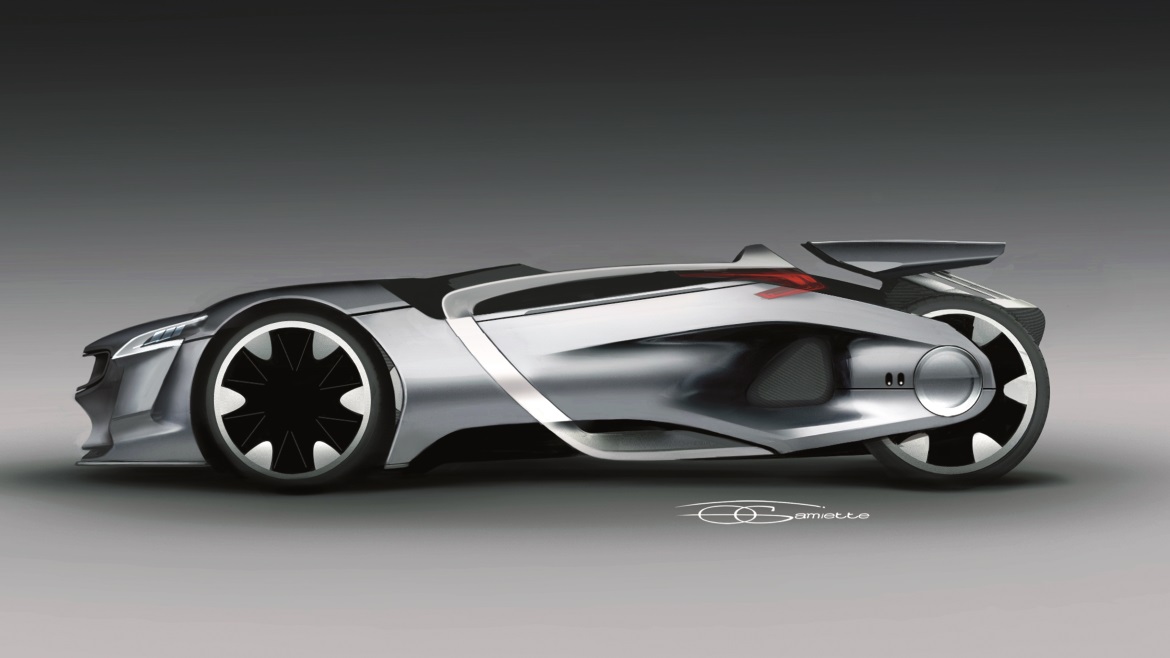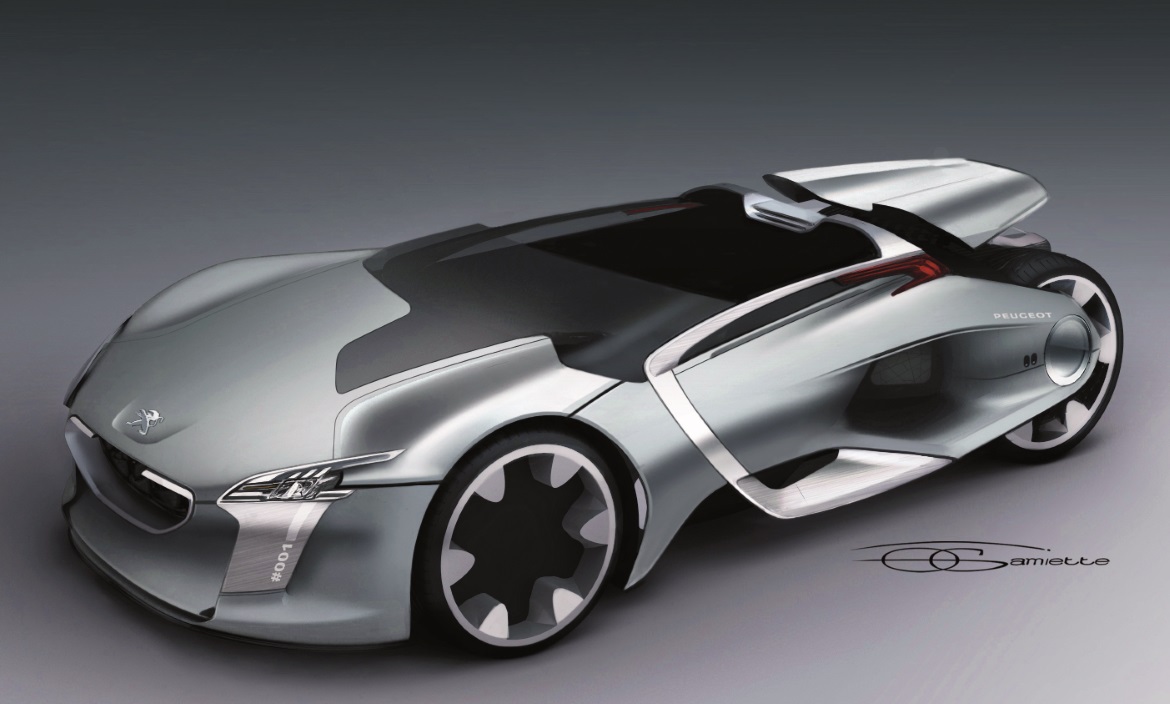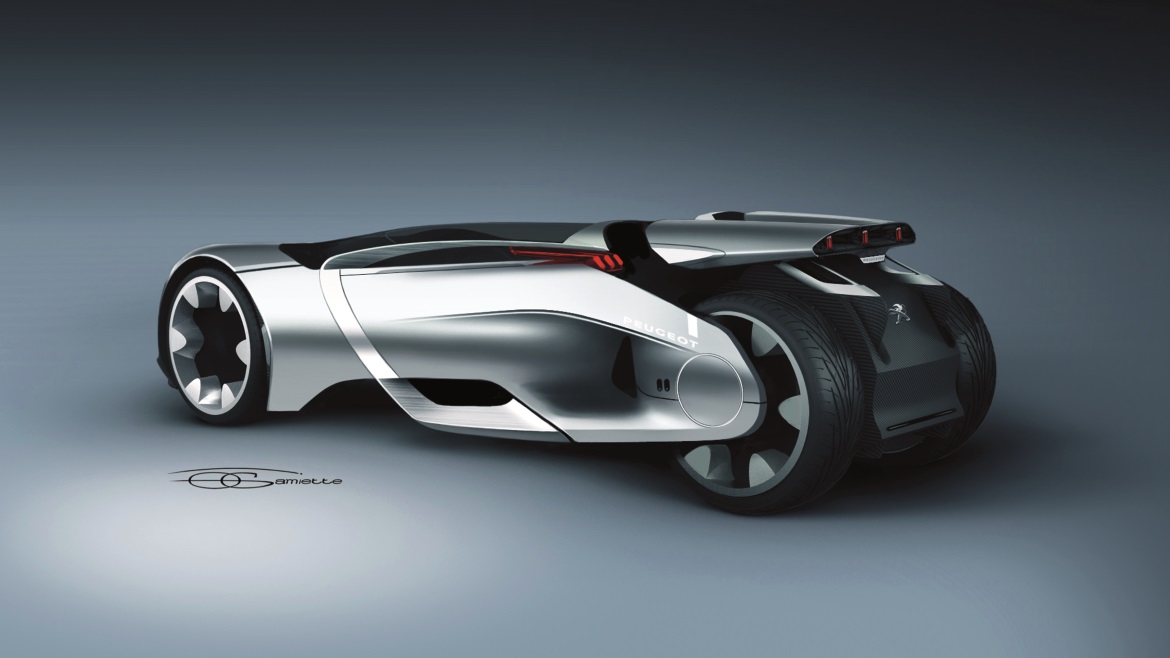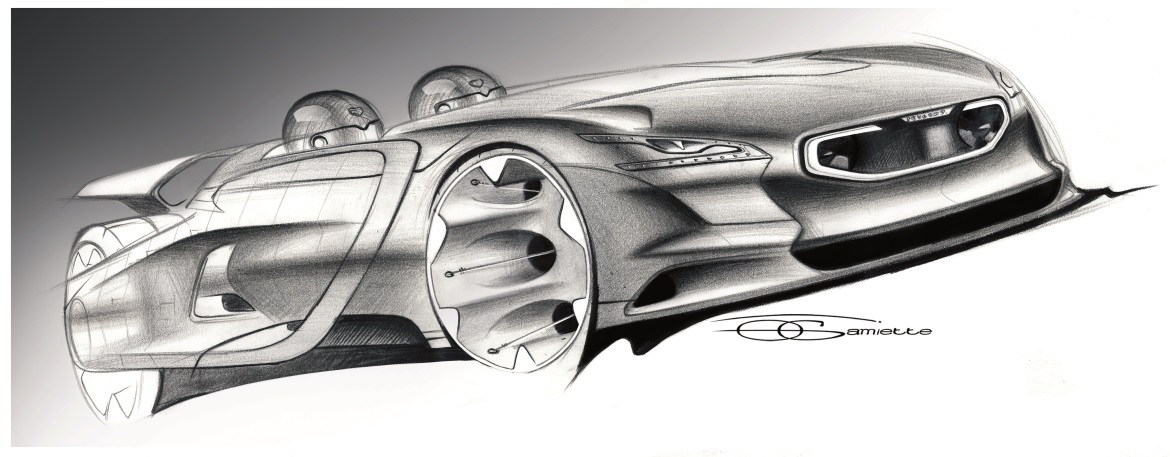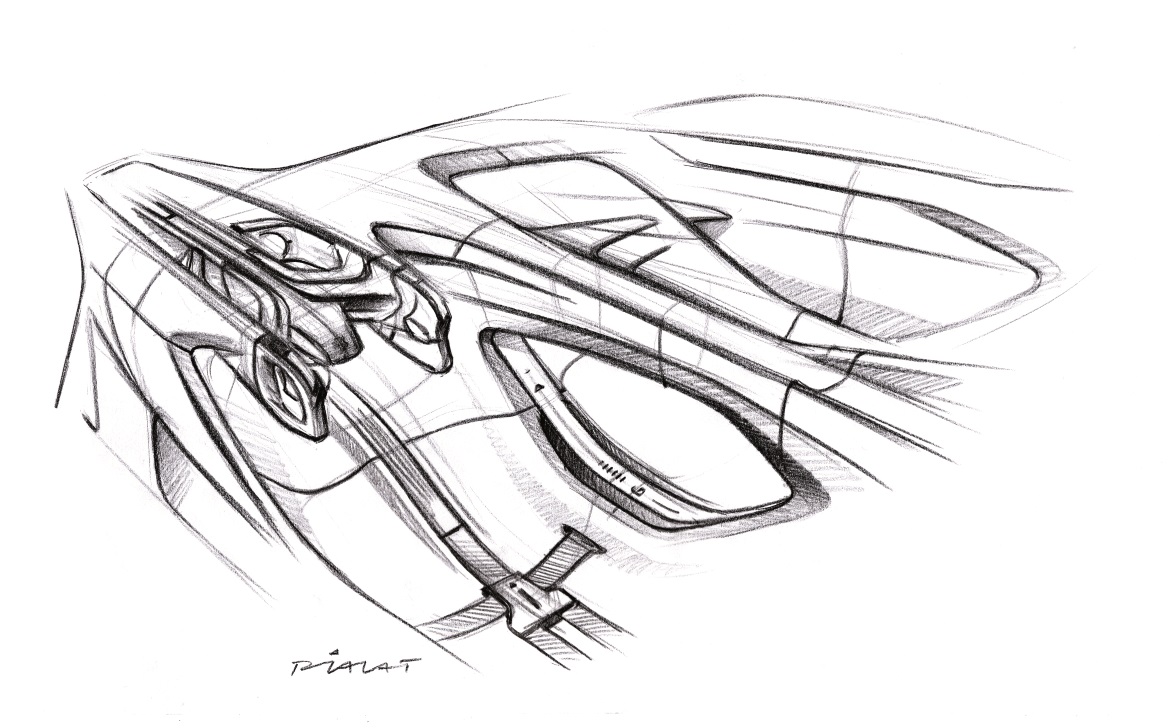PEUGEOT EX1, THE FEEL OF ELECTRICAL ENERGY (Auto&Design n.187/2011)
One of the concepts created by Peugeot this last Autumn preferred the sincerity of the circuit over the hype of the motor show: the EX1, which fuses aerodynamics and electricity to deliver record-breaking acceleration. At the Mondial del’Automobile 2010 in Paris, Peugeot exhibited two worthy concept cars, the SR1 and HR1 which, however, have already been presented in Auto&Design. Outside the motor show, however, in its show room on the Champs-Élysées in Paris, Peugeot unveiled a third prototype: the EX1, a vehicle destined to break acceleration records.
The EX1 project is an unequivocally sporty exercise. The running prototype was developed by Jean Christophe Bolle-Reddat’s team, which is responsible for the creation of Peugeot concept cars at ADN, the PSA Peugeot-Citroën Group’s creative centre. Bolle-Reddat joined the group in 1987 at the age of 23 and, in parallel with his official role, he also worked in close collaboration with Gérard Welter (the former head of Peugeot style) in his involvement in the WM and WR adventures. At first sight, the EX1 is reminiscent of a number of different projects produced by the brand in the past. These include the Asphalte (1996) and 20Cup (2005), both of which roadsters in the same spirit and conceived in the same mould, with the former boasting a very narrow rear track and the latter featuring only a single rear wheel.
In terms of style, the concept incorporates the new aesthetic language defined by Gilles Vidal. At the front, therefore, is the “floating grille” seen on the SR1 in January last year. The exterior design was defined by Olivier Gamiette, while Christophe Pialat was responsible for the interior. As this battery powered vehicle was destined to break acceleration records, the creators of the prototype wanted to maximise the impressive accelerative capabilities typical of electric power.
With a lightened clutch and gearbox, the EX1 unleashes all of its power instantly. The prototype is powered by two synchronous permanent magnet motors – one at the front and one at the rear, driving the respective axles. Each motor is capable of producing a constant 75 kW or peak 125 kW of power, matched by a constant 190 Nm of torque, with a peak value of 240 Nm. The two motors deliver a combined power output of 340 bhp. With this power on tap, it takes the EX1 just 3.58 seconds to hit 100 km/h, while top speed is around 260 km/h. The structure of the car is naturally made from carbon fibre, with a raised central beam linking the front and the rear and separating the two individual cockpits created for the driver and a single passenger.

